Alexandria rail projects break ground to ease East Coast bottleneck
Fourth track, bridge replacements and station upgrades aim to separate freight and passenger trains, boost capacity by 33%
Virginia officials and rail partners broke ground Wednesday on a suite of Alexandria rail projects designed to eliminate a critical bottleneck where multiple rail lines converge south of Washington, D.C.
The Alexandria Fourth Track Project, bridge replacements over King Street and Commonwealth Avenue, and station improvements represent part of a nearly $6 billion investment to transform passenger rail service along the East Coast.
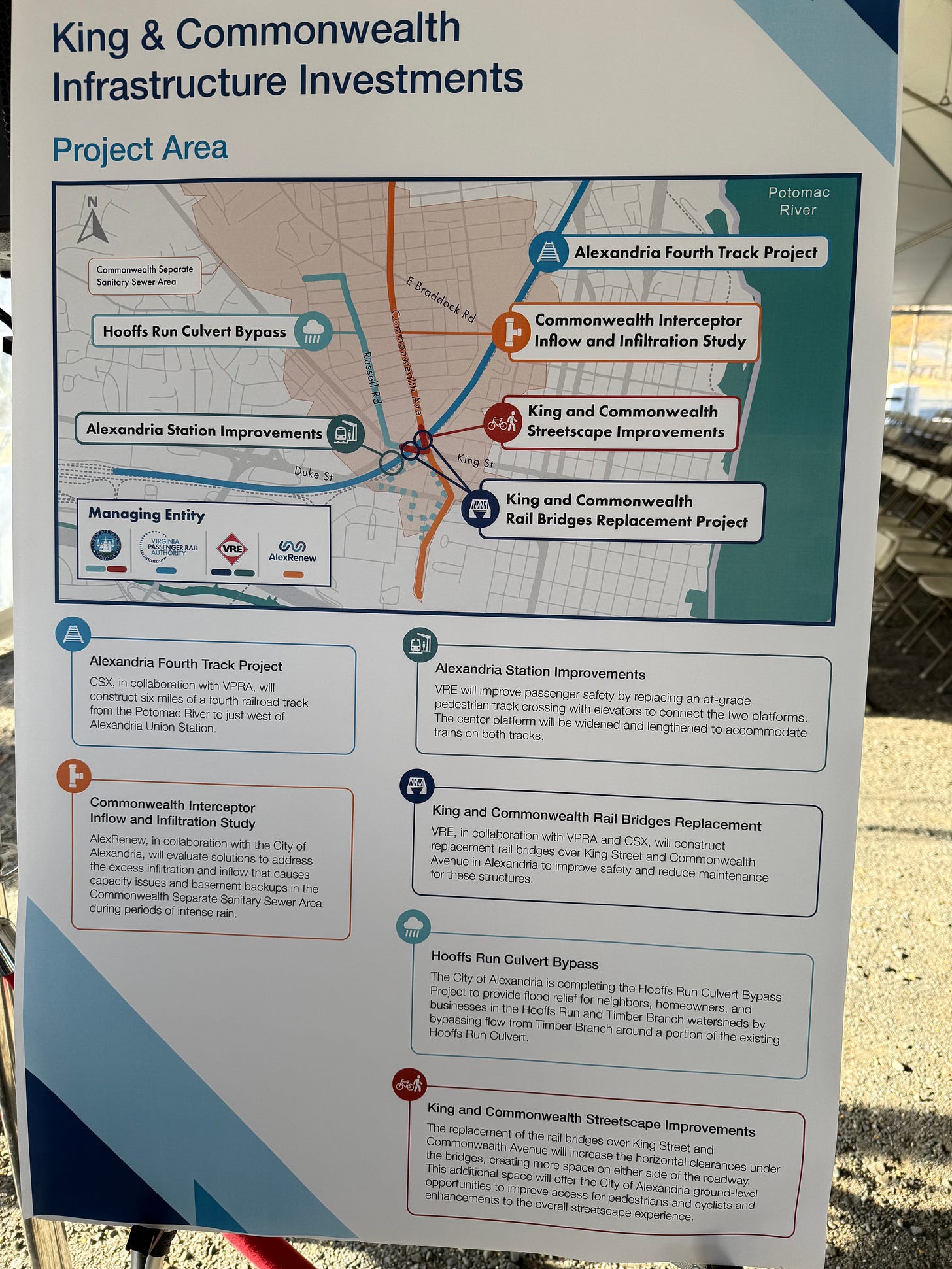
“What we’re going to have, when the fourth track project is complete, is two dedicated passenger tracks, two dedicated freight tracks from south of here all the way up to Union Station,” said DJ Stadtler, executive director of the Virginia Passenger Rail Authority.
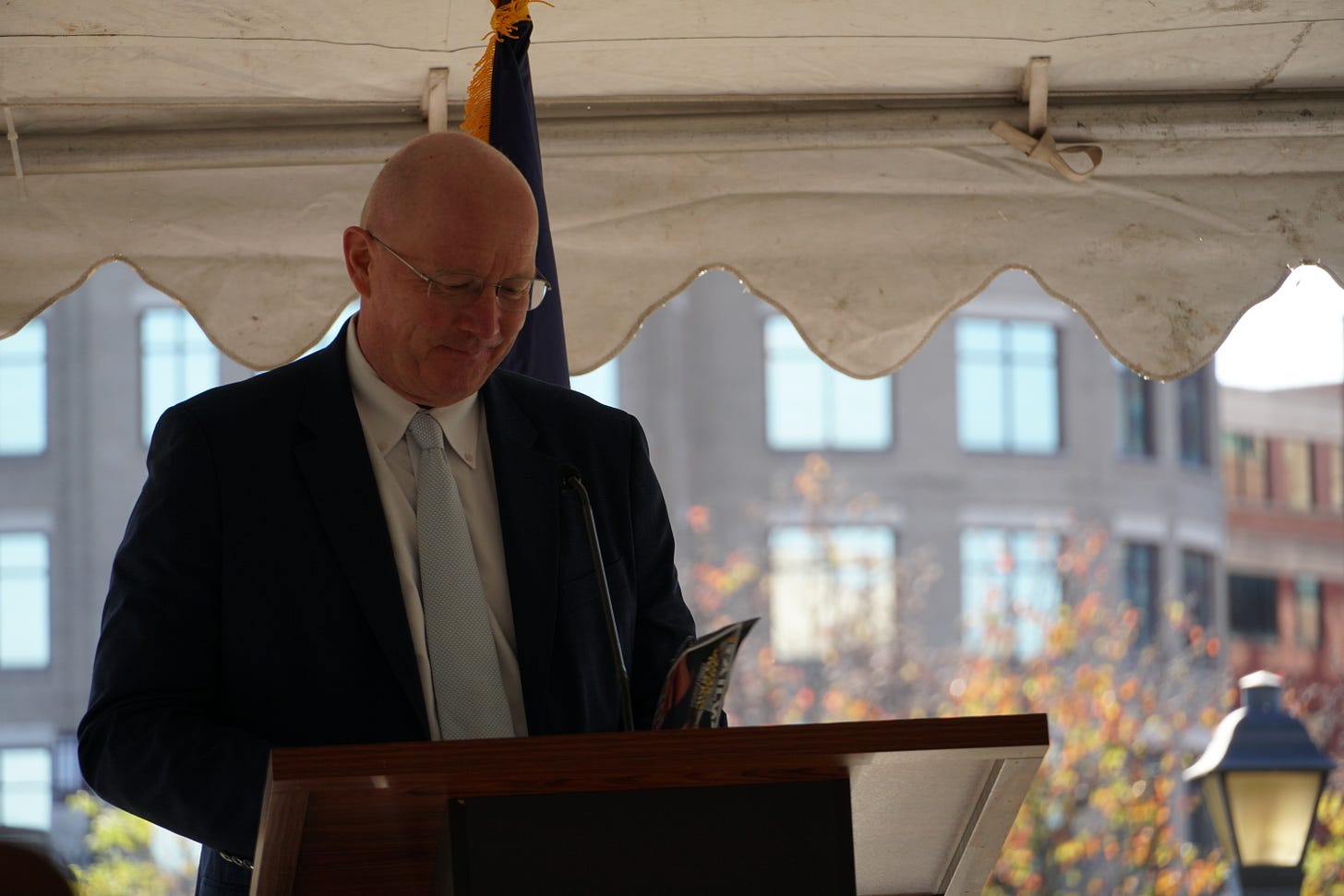
The projects address a longstanding capacity problem where five tracks narrow to three, then back to two, creating delays similar to highway lane mergers. Currently, three tracks from the Virginia Railway Express Fredericksburg Line and two tracks from the VRE Manassas Line converge into three tracks west of Alexandria Station.
Secretary of Transportation W. Sheppard Miller III said the improvements will increase rail throughput by 33%.
“If I told you your net income was going to go up by 33% today, would you be extremely excited?” Miller asked the crowd gathered at Alexandria Union Station. “Our throughput’s going up by 33% when we finish. It’s going to be a big deal.”

The Alexandria station serves as the second-busiest in Virginia, handling 358,000 Amtrak passengers in federal fiscal year 2024, not including VRE ridership.
“In fact, this is the second busiest station in the state of Virginia,” Stadtler said. “Anybody that comes here in the morning rush or the afternoon rush when the government’s open, you see people train after train after train.”
The fourth track project will construct six miles of additional railroad track and related infrastructure between Arlington and Alexandria. The design shifts existing tracks and adds the new fourth track within the existing right-of-way to separate freight and passenger operations.
“Right now, if you start here and you go northbound, you’ve got three tracks, you’ve got two tracks, you’ve got three tracks, you’ve got two tracks,” Stadtler said. “That’s a lot of merging, like you do on a highway where lanes exist, lanes don’t exist.”
The bridge replacement project addresses safety and maintenance concerns with aging infrastructure. Vice Mayor Sarah Bagley, who chairs the VRE board, said the improvements will benefit the entire community.
“The bridges, I want to highlight from the Alexandria perspective, are not only going to improve the experience for rail travel, but they’re going to improve the experience for everybody underneath that bridge to drive under it, to walk under it, to bike under it,” Bagley said.
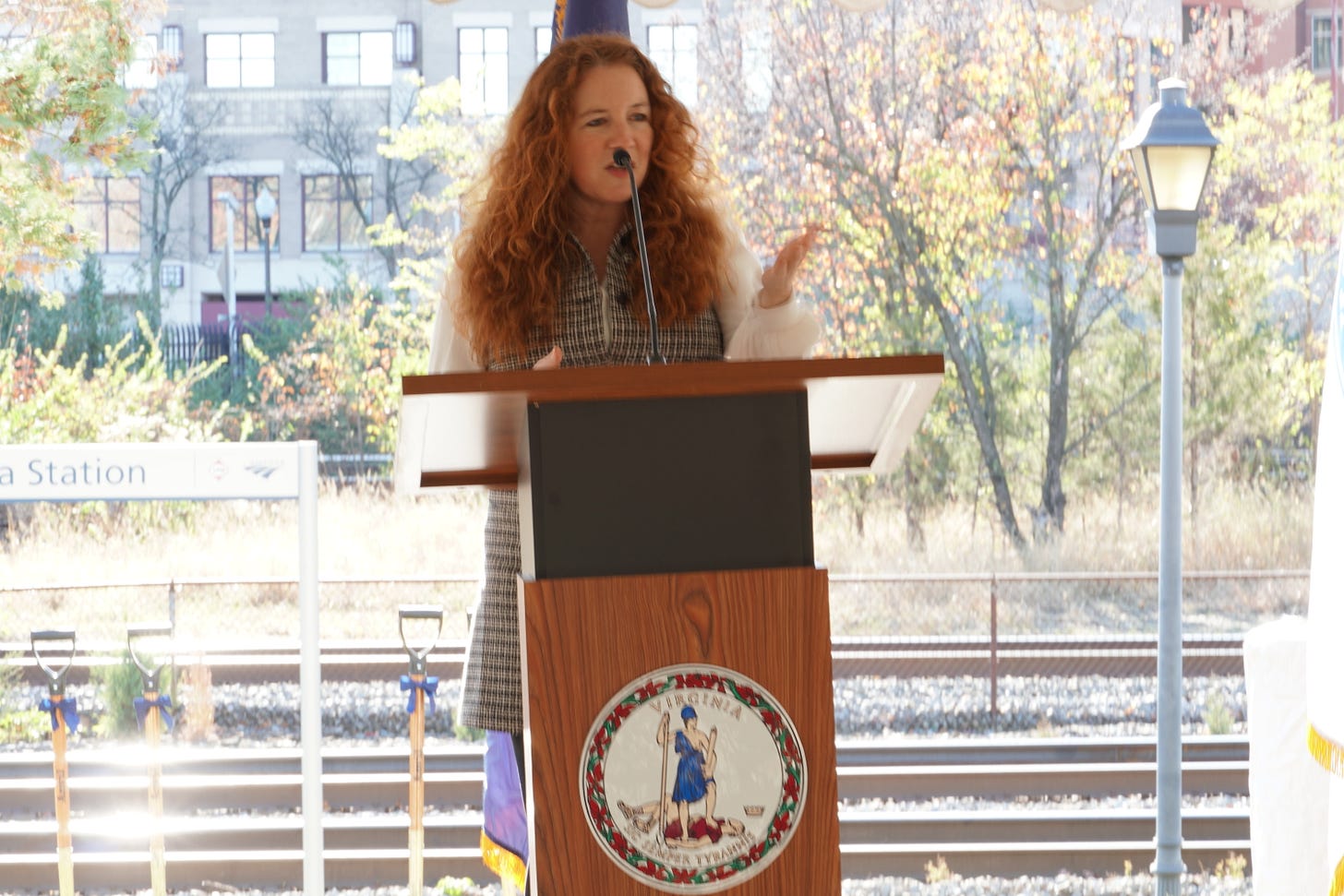
Stadtler noted the practical safety benefits of the new bridges.
“Every time a car goes under that bridge and unfortunately hits it, we’ve got to stop rail service and get an inspector out here,” he said. “Even if the inspector is five miles away, that could take an hour.”
Station improvements include raising the western platform to improve passenger safety and accessibility, rehabilitating the pedestrian tunnel, and extending the east platform to accommodate eight-car trains and enable simultaneous service from both sides.
The projects demonstrate unprecedented collaboration between agencies. VRE will serve as the lead agency during the construction of both its station improvements and VPRA’s bridge replacement projects under a single contract.

“This level of collaboration between projects is a huge advantage, allowing us to better align construction schedules and limit the impact on the surrounding communities as much as possible,” said Dallas Richards, VRE’s interim CEO. “We recognize that this is a once-in-a-generation type of project.”
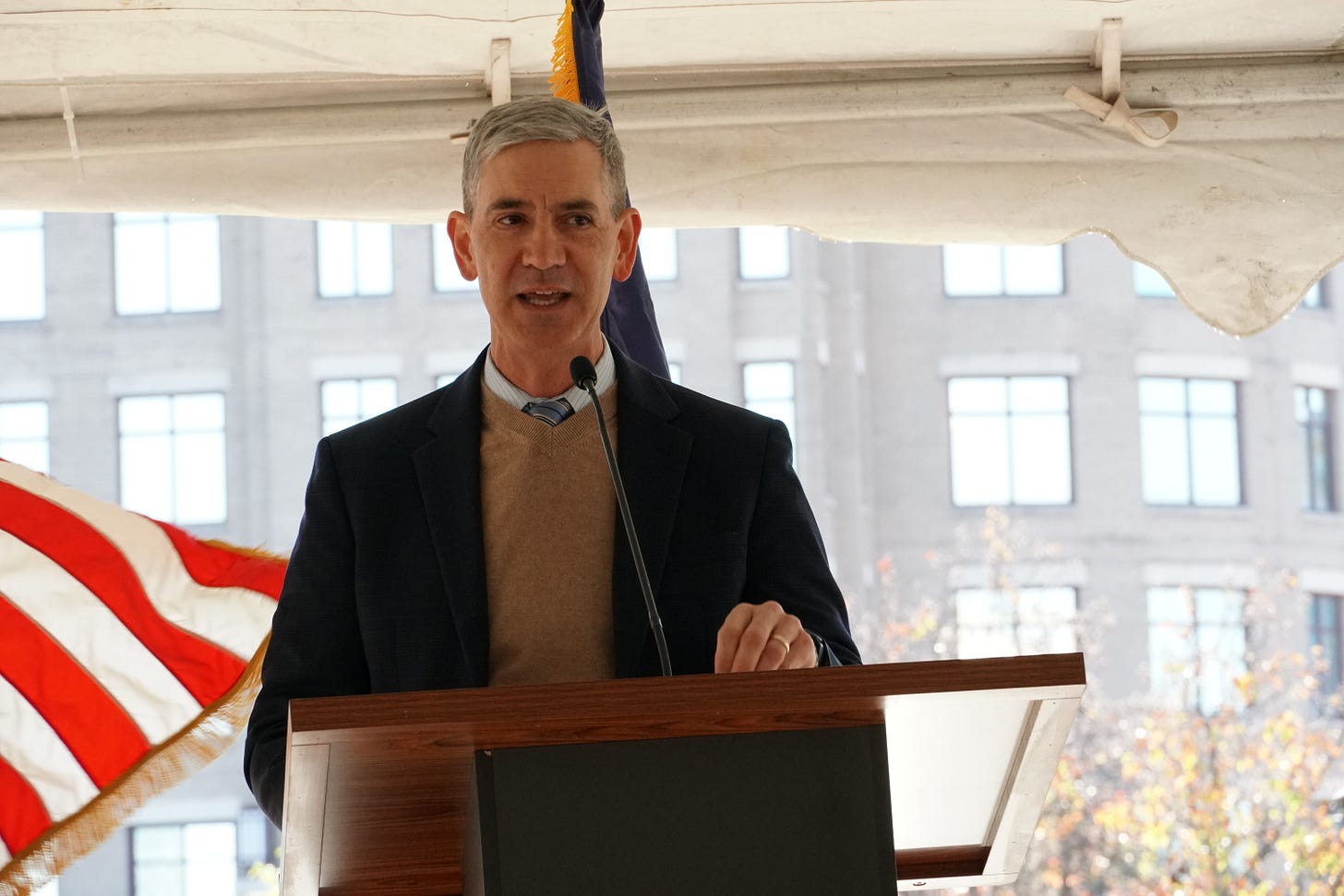
CSX Transportation, which owns the freight rail infrastructure, partnered with Virginia on the broader Transforming Rail in Virginia initiative. Tammy Butler, CSX vice president and general counsel, said the partnership has become a national model.
“Several years ago, Virginia and CSX started discussing ways that we could elevate our partnership,” Butler said. “This resulted in the Long Bridge expansion project as well as additional other capacity projects.”
The Alexandria projects connect to the Long Bridge expansion, which will add two tracks to the existing two-track bridge spanning the Potomac River. Without the Alexandria improvements, bottlenecks would simply shift south rather than being eliminated.
“If the Long Bridge is expanded to four tracks but only three tracks remain from Arlington to Alexandria, the bottleneck could still exist just a little south, and the benefits of the Long Bridge expansion would not be realized,” Butler said. “This project will create a continuous four-track corridor from D.C. to the VRE Manassas line, essentially separating passenger and freight operations.”
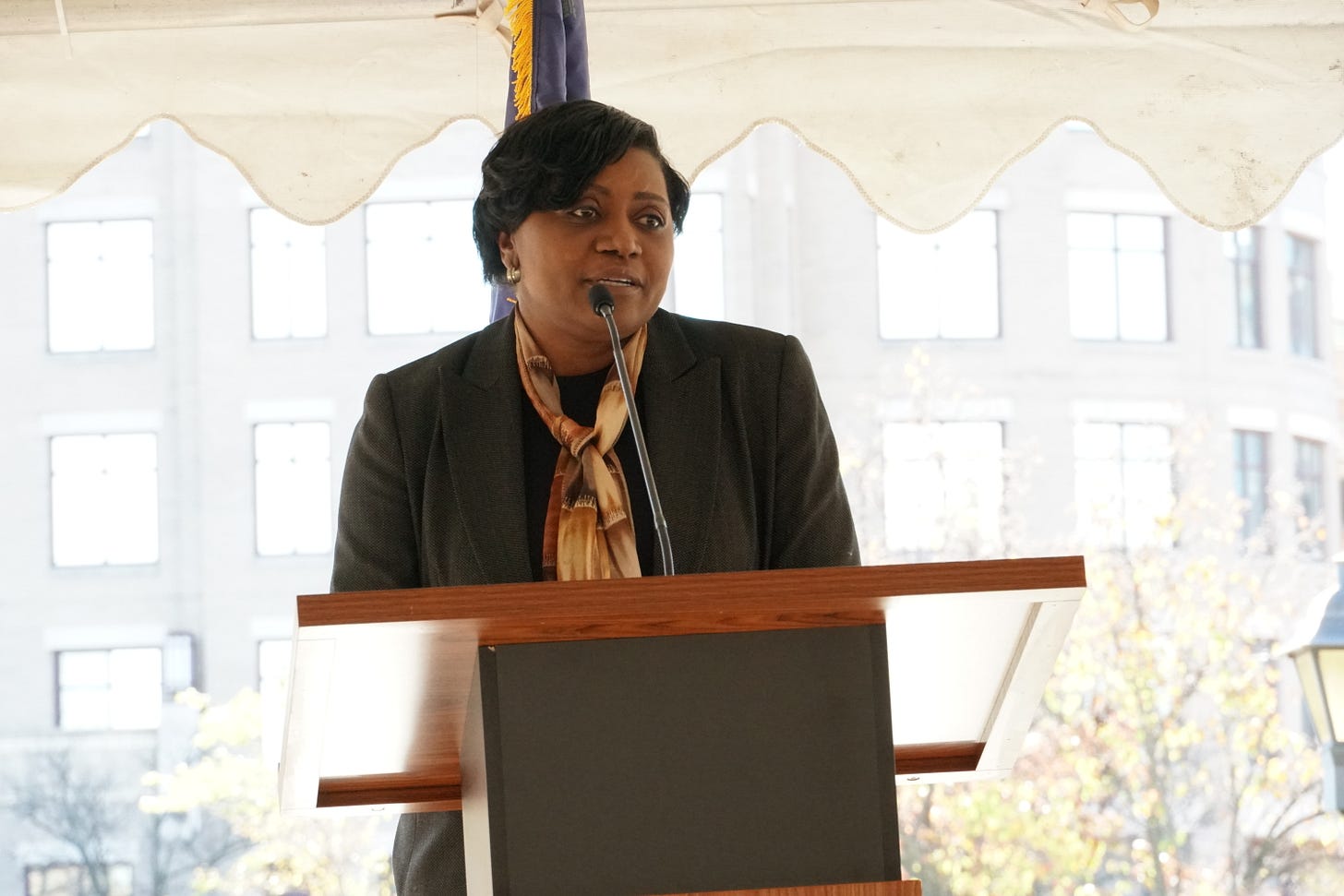
Jennifer Mitchell, Amtrak’s executive vice president for strategy and planning, said Virginia leads the nation among states with supported passenger rail services. Amtrak is investing $944 million in the broader Virginia rail program.
“More people than ever want to ride Amtrak right now,” Mitchell said. “We have had record-breaking ridership, record-breaking revenue growth in the past year, and especially here in Virginia. Virginia really is a leader among all the other states across the country.”
Mitchell said safety improvements at the station are a top priority.
“Safety is Amtrak’s number one priority, and this is going to create a much, much safer crossing for our passengers as well as VRE passengers,” she said.

The improvements will enable expanded VRE service, including weekend and evening trains. U.S. Rep. Don Beyer, who co-sponsored the Long Bridge Act of 2020, and U.S. Rep. James Walkinshaw, who recently served as VRE operations board chair, attended the ceremony.
Walkinshaw said the projects support VRE’s System Plan 2050 vision for bidirectional and Saturday service.
“VRE has historically been a very traditional, successful, but traditional commuter rail line serving folks who work in their offices from 9 to 5, and the world has changed,” Walkinshaw said. “We got to provide people different and better options.”
Beyer, who served as U.S. ambassador to Switzerland, drew on his experience observing Switzerland’s rail system to emphasize the broader community benefits of robust rail infrastructure.
“There’s a different culture when you’re riding a train than if you’re in a car by yourself,” Beyer said. “There’s something much more community-oriented when you’re on the rail.”
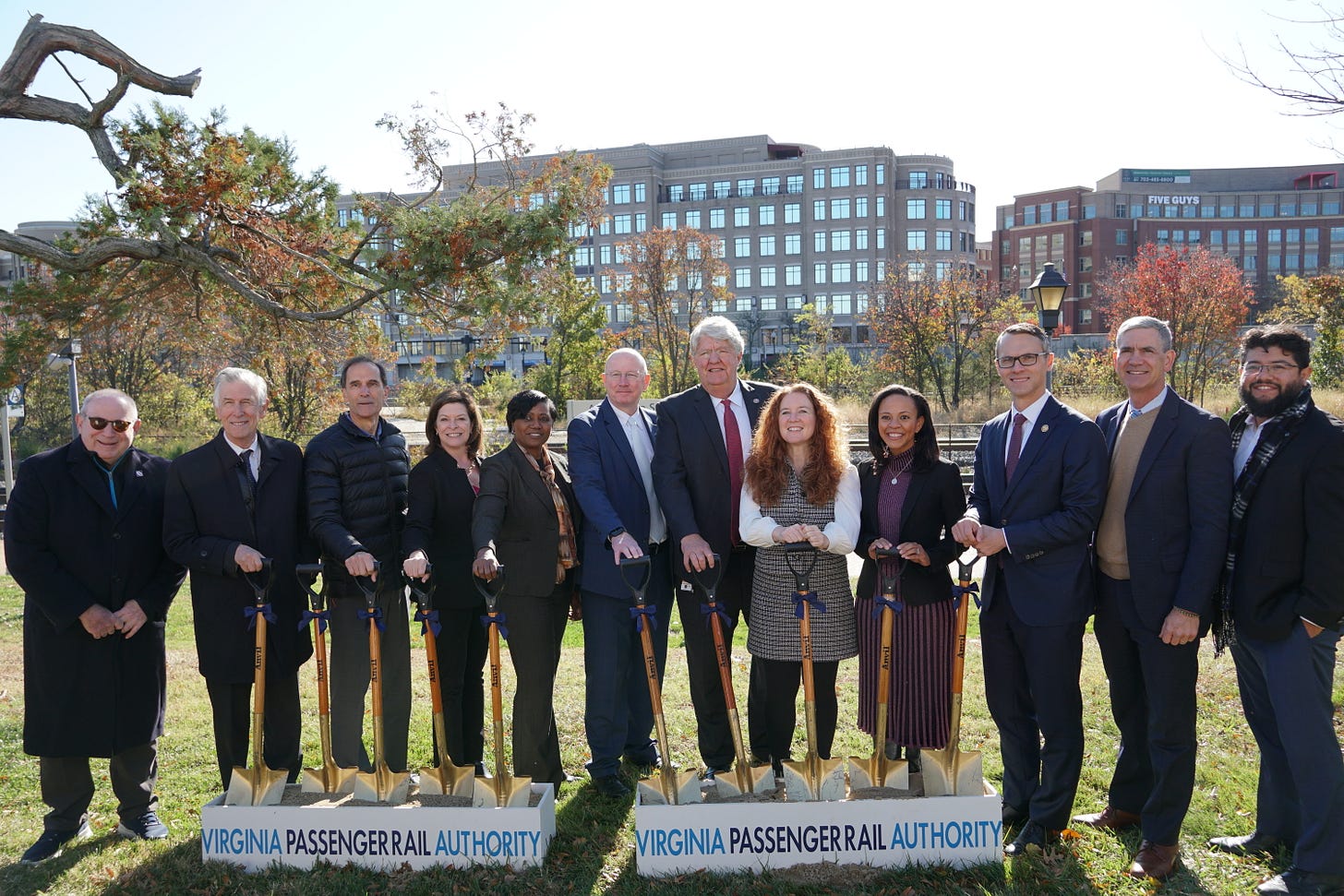
Miller provided historical context for the ceremony, noting that Alexandria has been connected to rail for nearly 200 years. In the late 1840s, the city invested in at least five major rail infrastructure projects in an attempt to compete with Baltimore as an industrial hub.
The current Alexandria Union Station opened Sept. 15, 1905, at a cost of $62,000.
“That train station opened over 120 years ago,” Miller said. “And although there’s been some minor renovations, the station is pretty much the same place.”
Bagley, welcoming attendees to the ceremony, reflected on the station’s enduring role in connecting communities.
“This station opened in 1905 and since then has been vital,” she said. “What it does is it brings people together as it did this morning, and it brings people up and down the East Coast. I see students going home for Thanksgiving. I see families going to visit each other. I see businessmen going up and down the East Coast for day meetings.”
Construction timelines are being developed, with completion expected to align with other Transforming Rail in Virginia projects.
For more information on the project, visit the project pages on the City of Alexandria and the Virginia Passenger Rail Authority.

